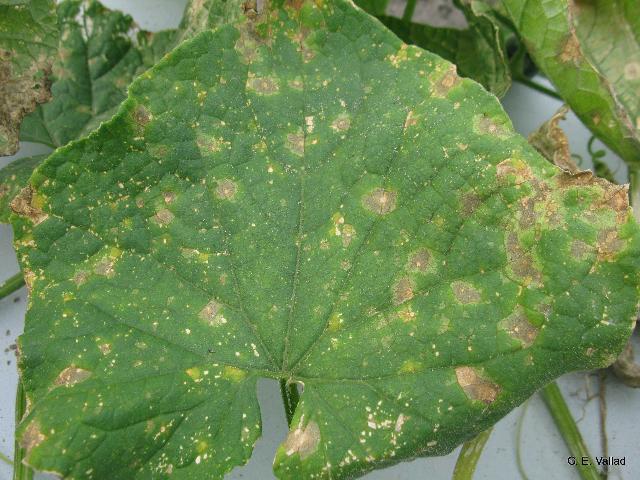By Clint Thompson
One disease that Southeast cucurbit producers need to have on their radar this upcoming season is anthracnose. It is rapidly becoming a major issue for growers, says Bhabesh Dutta, University of Georgia (UGA) Cooperative Extension vegetable plant pathologist.

“It’s now a major problem after Pcap (phytophthora capsici). It has been an emerging issue in our cucurbits including watermelon, cucumber and squash in particular. It’s not just a problem in Georgia but is also becoming a problem for the cucurbit production, particularly in watermelon in the east coast,” Dutta said.
The disease primarily impacts cucumbers and watermelons, but other cucurbits can also be a host. Its symptoms consist of leaf spots, defoliation and an occasional fruit lesion. It can also spread in the fruit bins after harvest, which makes it more difficult to control.
Its rise in severity since 2019 could be attributed to a pair of factors, though further research is needed to verify.
“We have observing loss of efficacy and control with commonly used Qol (strobilurin) fungicides in cucurbits (watermelon, cucumber and squash). QoI fungicides have been a mainstay for anthracnose management. It seems the pathogen has developed resistance to this chemistry,” Dutta said.
Researchers in Georgia speculate a potential emergence of novel species or species complex that are insensitive to QoIs. Dutta and his collaborator hope to answer these questions this year during research on the UGA Tifton campus.
“Anthracnose has become a problem of concern for our cucurbit growers. Even downy mildew was not a huge issue because we have effective fungicides,” Dutta said. “A considerable amount of cucurbit growers have experienced anthracnose this year.”
The disease can survive in infected debris, so rotation and sanitation of plant debris at the end of the production season are important preventative measures.









